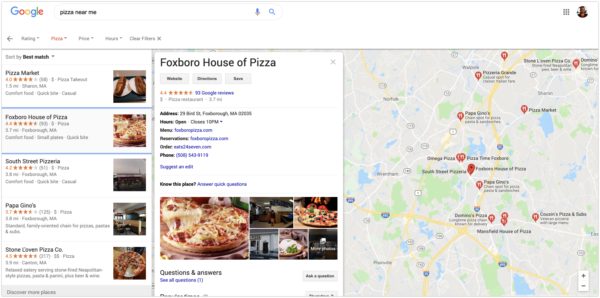
As a small business entrepreneur, your main goal is likely to sell more of your products and services. So where does your website traffic fit into that?
Well, simply put, every visitor to your site is an opportunity for a sale.
And without traffic to your website, you’ll miss out on:
- Building brand awareness
- Growing your profits
- Engaging with your customer base
Just as important as generating traffic to your small business website is choosing the specific page on your site that you want to direct visitors to. If your goal is to generate more sales, you should point visitors to a page that specifically focuses on your key selling points. This is called a ‘sales page,’ and you might need to have more than one depending on your business model and customers.
In this post, we’ll detail what your sales page should include and how to make one that works for your business. But first, let’s take a look at how you create traffic to your website in the first place.
How do you drive traffic to your business’s website?
There are many short and long term strategies to increase traffic to your website. Here, we’ll focus on some of the quickest and most-effective things you can do to get started.
Create a Google My Business listing
This is the listing that appears when consumers search for your business (or a related product/service) on Google. It helps you to:
- Show up in Google map searches. This means potential customers can see if you’re located near them.
- Earn trust from customers. Showing your customers that your business has a complete and professional listing helps them see that you’re legitimate.
- Show up in Google’s Local Pack. An optimized My Business Listing can greatly increase your chances of getting featured on the “Local Pack” in search results, increasing your visibility even further in your local market.
- Increase website traffic. Each time your business listing shows up, it includes a link to your website that customers can click on immediately.

This listing is not only a free tool for generating web traffic, but it also:
- Has an insights tab that allows you to see the number of views your posts and photos are getting
- Allows customers to easily rate you and leave reviews you can respond to
Best of all, it’s relatively quick and easy to create a Google My Business Profile, so you can start reaping these benefits right away!
Post on social media
Regardless of what type of business you own, you’ll want to be active on at least one social media platform. Here’s a quick breakdown of the various platforms and how you might want to use each of them:
- LinkedIn. If your business is looking to target a specific type of worker, then you’ll want to be active on this platform. For instance, if you offer products, content, or services that help lawyers or law firms specifically, LinkedIn can help you target them. If your business recruits job candidates, you’ll also want to actively post and advertise on LinkedIn.
- Twitter. This platform allows you to post real-time updates for customers. It also allows you to engage in real-time conversations. This is great for getting to know your audience better. It’s also a good tool if your company participates in community events or has a lot of promotions you want to update consumers about. On top of this, Twitter can help you expand your customer base through hashtags that create brand awareness and product recognition across broad audiences.
- Instagram. An important distinction with this platform is that visuals are king. Similar to Twitter, this platform allows you to expand your brand awareness by using hashtags to target broader audiences. However, you can also work with Instagram influencers (those with a large following). This can help you target specific markets. All influencers have to do is post about your product or offer coupon codes that link back to your site. Generally, you’ll offer these influencers commission for each product that’s sold through their link.
- YouTube. This platform allows companies to post demonstrations and tutorial videos, which helps consumers see your products in action which can influence their buying decision. Youtube also gives you the opportunity to create valuable content that others will want to share, which ultimately can drive more traffic back to your website.
Social media tactics to drive traffic to your website‘s sales pages
All your posts on these platforms can easily increase your business’s visibility and link back to your website. In some cases, you may also want to use social media advertising techniques such as:
Promote limited-time deals
This includes any kind of discount, deal or reward that’s valid only during a certain time. For instance, if you’re looking to get the word out about your clothing store’s summer sale, you might post something like this on your Twitter account:
“Free tank top when you buy a shirt! #SummerDeals (insert your company’s website URL here).”
In addition to your website’s URL, you’ll also want to include a picture to engage your customers.
Try some giveaways
The goal of giveaways is to increase brand engagement and attract new customers.
In general, you’ll want to offer something your target market needs. So you may choose to give away sunglasses in the summer on your Instagram account. To do this, you’ll want to post a high-quality photo of your products along with a message like this:
“It’s time for a giveaway! Follow these steps to win five new pairs of sunglasses that’ll protect you from the sun’s rays this summer! #giveaway #sunglassesforsummer
1. Like this photo and tag a friend
2. Follow us @(your company’s name or social media account here)
Remember that the steps need to be quick and easy. Otherwise, people may not bother to take part.
Offer free shipping
Some ways you can offer free shipping include:
- Having it kick in over a certain order amount
- Offering it on select items
- Using it as a promotion
Whichever method you choose for offering free shipping, it’s easy to promote to your target market. For instance, you can use Facebook to advertise free shipping with a post like this:
“It’s sweater weather! Bundle up with our new shipment of wool sweaters. Free shipping on orders over $30. (Insert your website’s URL here)”
Be sure to include high quality and engaging photos of your sweaters or products along with your posts.
Share Coupons
Whether you offer $5 off a purchase or a certain percentage, you can use social media to get the word out about it. For instance, a Twitter post with a coupon for your natural products store may look like this:
“Don’t let dry skin stop you this winter. Get $5 off any purchase above $40. Use coupon code (insert coupon ID number here).”
Like other posts, you should always include a picture of your products and of course, a link to the relevant sales page.
Start a blog
Blogs build brand awareness by providing useful and engaging content for your customers. Each blog post you create can include links back to your sales page, main product’s page, or website’s home page. This can increase traffic to your sales page or website over time.
One long term strategy to consider for your website is Search Engine Optimization (SEO). Some initial steps to optimize your pages for search are:
- Using keywords that consumers would search for in Google in your content titles and headings, URLs and meta-descriptions
- Increasing your page speed for better load times
- Refreshing old content with new SEO keywords and updated references
Optimizing your website for search results helps your target audience to find your products and services more easily. It also helps you attract more free traffic to your website.
The Importance of a Sales Page
Now that we know the basics of generating website traffic, let’s dive into the page we want to direct visitors to in order to make a sale.
Your sales page promotes your products or services and helps convince customers to buy them from your business. Before you can set up a successful sales page, you’ll need to understand your target market. Some key characteristics to narrow down are your customers’:
- Age
- Location
- Spending patterns
- Interests
- Income level
From there, you can create product descriptions and content that relates directly to them. Some important things you should do when building your sales page are:
- Acknowledge a real problem your customers face and explaining how your product is a solution.
- Highlight the key benefits of your product and how it will impact the customer’s future in the long-run.
- Use the word “you” throughout your page to relate to your customers and address them directly.
- Build trust by showcasing statistics, testimonials, and other endorsements that tell customers your products are high quality.
- Include images and videos that help break up your content and engage your customers.
- Keep your content concise and clutter-free so customers can easily scan it.
- Add a clear call-to-action on the page so visitors know what they should do if they’re interested in your offer.
Getting traffic to your sales page
Once you have your sales page set up, you’ll want to experiment with using some fo the tactics we talked about earlier in this post to start driving traffic there.
Continue tweaking both your advertising tactics and the content on your sales page until you begin to get the results you want. Don’t be discouraged if you don’t start making sales immediately, as you might need to test different approaches before you find one that works great for your business.
Segmenting your sales page audience
If you have multiple audience segments, consider going through the process again to create another sales page that specifically addresses another segment’s needs. Then, you can employ the same tactics listed above, but targeting this other group you’ve identified.
Your target audience will affect everything from which strategies you use to drive traffic, to the content you develop to implement those strategies. The bottom line is that you always want to keep a specific audience front-of-mind when creating a sales page and make sure you’re selling to them directly.
Patience and strategy are key
Your business’s website won’t start magically generating sales for you. You must have a strategy set up to drive traffic to it. Luckily, it’s easy to get started driving visitors to your sales pages using your social media accounts, blog, and Google ads. With the right strategies in place, you’ll be converting website visitors to customers in no time. Remember that the more you expand your business, the more business coverage and liability insurance you’ll need.




